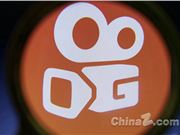Alibaba's Wan team has officially open-sourced the Wan2.2-Animate-14B (short for Wan-Animate) model, a high-fidelity character animation generation framework that has quickly become the focus in the AI video field. This model, with a single-model architecture, simultaneously solves two major pain points: "character animation generation" and "character replacement." It supports users to upload a single image or video, enabling precise transfer of expressions and actions along with environmental integration, greatly reducing the barrier to video creation. The model weights and inference code have been uploaded to the Hugging Face platform for free use by global developers.

Core Features: One-click solution for dual tasks
The core of Wan-Animate lies in its unified framework design. Users only need to provide a character image (such as a static portrait or cartoon character) and a reference video to generate a high-precision animated video. The model precisely replicates facial expressions, body movements, and even complex dance sequences from the reference video while maintaining the original characteristics of the character, avoiding issues like blurring or distortion.
In the character animation generation mode, it is especially skilled at lip sync, transforming static images into dynamic performances. For example, it can make anime characters speak along with a speech or music video, producing smooth and natural output that supports multiple languages and accents.
The character replacement feature is more innovative: the model can seamlessly replace the person in the original video with a new character while automatically matching the lighting, tone, and background of the original scene to ensure visual consistency. This means users can easily "swap faces" without disrupting the overall narrative, such as quickly iterating actors in short films or advertisements.
Technical Highlights: Multimodal Fusion Driven
Based on the Wan2.2 series technology, this model integrates skeletal signal control for body movement, facial implicit feature extraction for expressions, and a Relighting LoRA module to optimize environmental lighting. Compared to traditional tools, it performs exceptionally well in lip synchronization accuracy and full-body action replication. Early tests show that even with low-quality input, the output can reach professional-level quality. The open-source community has indicated significant potential for integration into frameworks like ComfyUI, with developers already starting to build custom workflows for VTuber production or independent film animation.
Application Prospects: Infinite Possibilities from Entertainment to Business
The open-source release of Wan-Animate is seen as a "game-changer" in AI video generation. In the entertainment field, it helps music video (MV) or short video creators, generating complete dance performances from a single illustration; in commercial scenarios, such as e-commerce ads or corporate training, users can play multiple roles with one person, avoiding high shooting costs. In the future, as the community optimizes, the model is expected to expand support for multi-character videos, further promoting the application of AI in the film industry.
However, early users also pointed out that the initial version still has room for optimization in VRAM requirements (a high-end GPU is recommended for 14B parameters) and certain edge cases (such as 2D animation lip sync). It is expected that a more mature version will be released within six months.
Project Address: https://github.com/Wan-Video/Wan2.2








